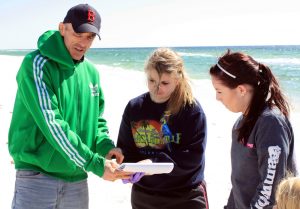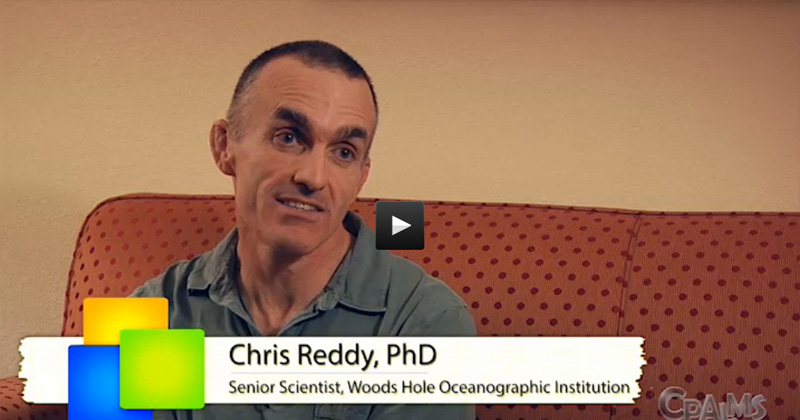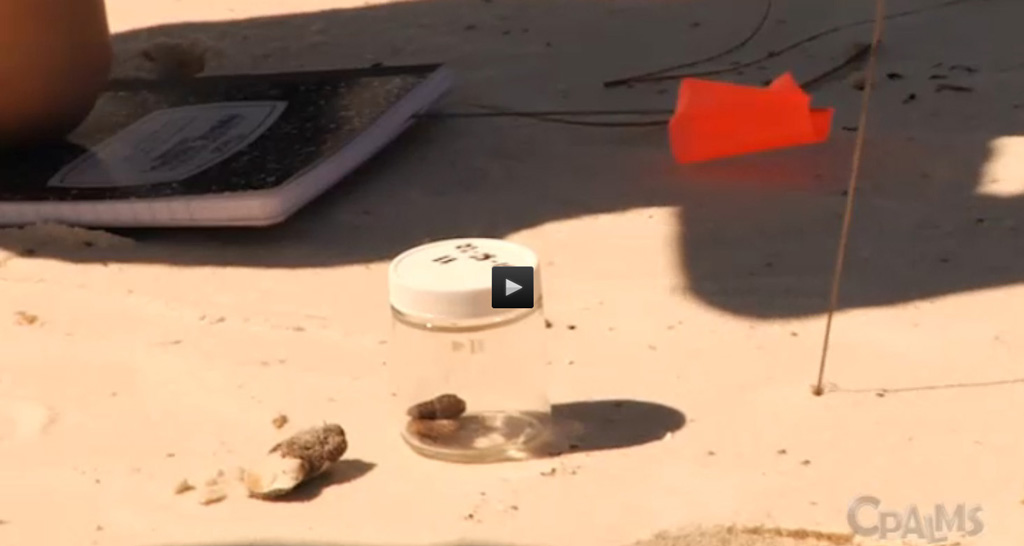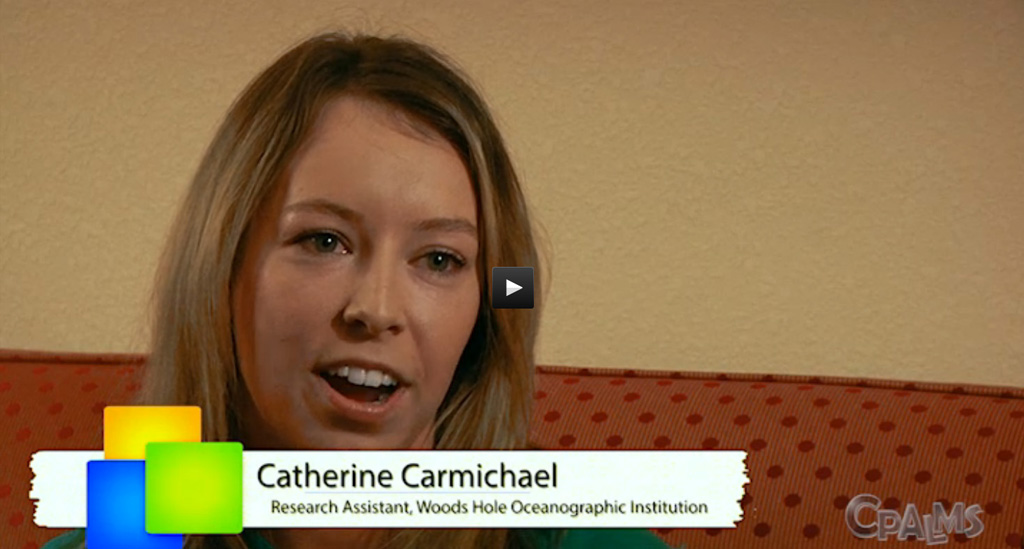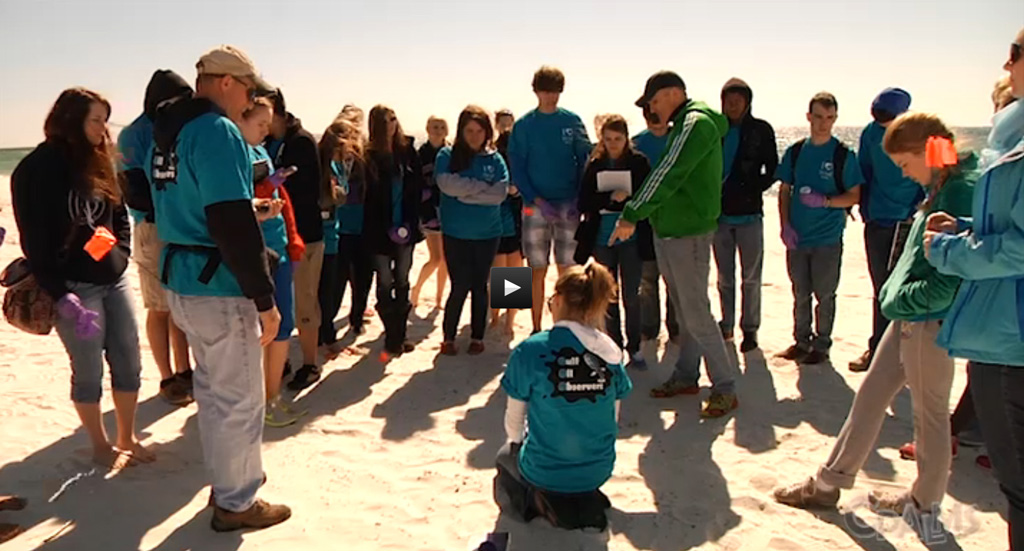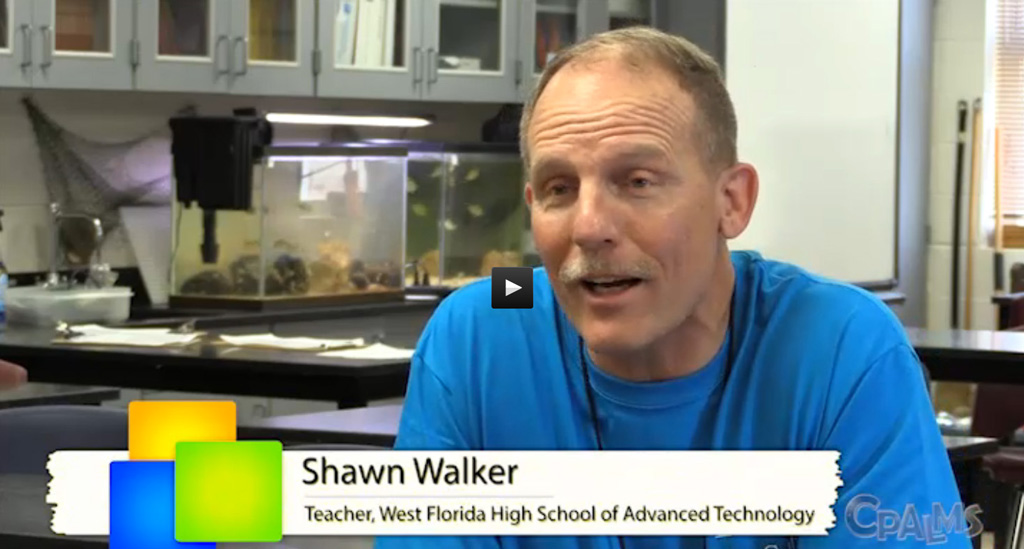Reddy Demystifies Oil Degradation and Fingerprinting in Educational Videos
– September 10, 2014
Biodegradation? Chromatography? While scientists toss these terms around with no problem, they can sound like a foreign language to others.
In two educational videos, marine chemist Chris Reddy translates these terms and explains their significance to Deepwater Horizon oil identification and research.
Reddy, with the Woods Hole Oceanographic Institution and a member of the Deep-C science team, sits down with the CPALMS education-resource group and explains crude oil in the Gulf of Mexico and identifying its origins detective-style.
The Never-Ending Jigsaw Puzzle
Reddy explains that crude oil varies in consistency, composition, and quality. Identifying an oil’s chemical makeup can help responders make better decisions if another spill happens. Describing microbes as “fantastic chemists” in their ability to consume oil, he explains that just because they can degrade oil does not guarantee that they will. Reddy likens himself to a “sociologist of these molecules” as he pieces together knowledge about microbial interactions with oil and their behavior in the marine environment. Watch here…
Crime Scene Investigator
Reddy describes his use of chromatography to find the distinct “fingerprints” or “genetic markers” of different oils and determine their origin, much like a forensic investigator analyzes DNA. He works with students to collect oil samples along Florida beaches through the Deep-C Gulf Oil Observers (GOO) project. Reddy considers these students his colleagues, helping to continue his research and tell the story about the oil’s fate. Watch here…
Want to Know More?
Reddy’s colleague Catherine Carmichael and marine science teacher Shawn Walker describe the research that Florida high school students experienced first-hand through Project GOO. Listen and watch as they use fieldwork to transform the beach into a classroom, training the next generation of scientists.
Visit the Deep-C website for information about their research.
************
This research was made possible in part by grants from BP/The Gulf of Mexico Research Initiative (GoMRI) to the Deepsea to Coast Connectivity in the Eastern Gulf of Mexico (Deep-C) consortium. The GoMRI is a 10-year independent research program established to study the effect, and the potential associated impact, of hydrocarbon releases on the environment and public health, as well as to develop improved spill mitigation, oil detection, characterization and remediation technologies. An independent and academic 20-member Research Board makes the funding and research direction decisions to ensure the intellectual quality, effectiveness and academic independence of the GoMRI research. All research data, findings and publications will be made publicly available. The program was established through a $500 million financial commitment from BP. For more information, visit https://gulfresearchinitiative.org/.
© Copyright 2010- 2017 Gulf of Mexico Research Initiative (GoMRI) – All Rights Reserved. Redistribution is encouraged with acknowledgement to the Gulf of Mexico Research Initiative (GoMRI). Please credit images and/or videos as done in each article. Questions? Contact web-content editor Nilde “Maggie” Dannreuther, Northern Gulf Institute, Mississippi State University (maggied@ngi.msstate.edu).

